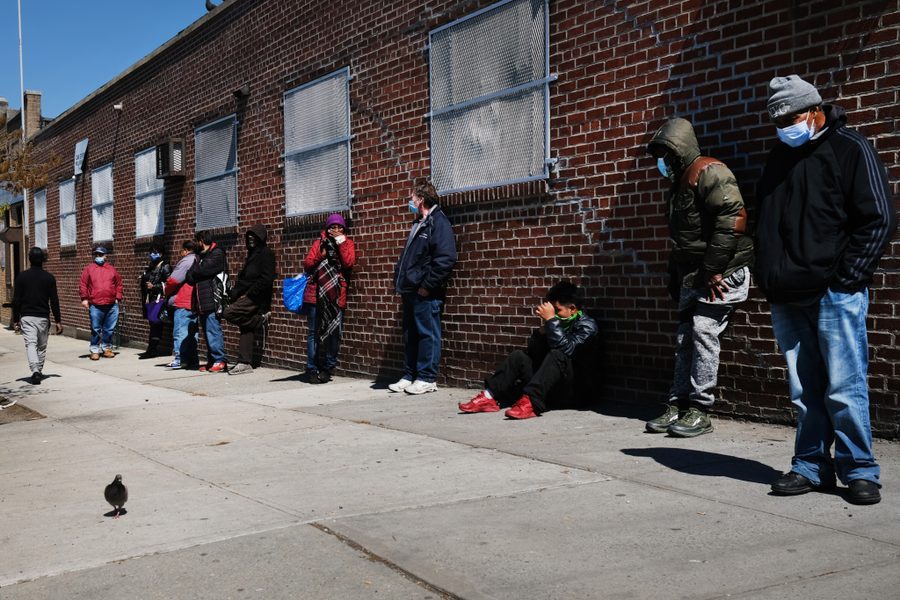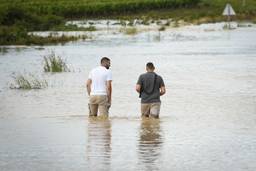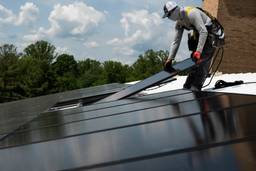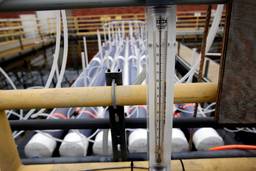
Later this month, Pavlina Tcherneva, an economics professor at Bard College and a research scholar at the Levy Economics Institute, is publishing a book entitled The Case for a Job Guarantee. The book details a policy idea that she’s been thinking about and developing throughout her career. It’s gained momentum in recent years, with senators like Kamala Harris (D-Calif.), Cory Booker (D-N.J.), and Bernie Sanders (I-Vt.) embracing it, and many activists have described it as an integral part of any Green New Deal. But what is a Job Guarantee, and how would it work? Contributing writer Rachel Cohen talked with Dr. Tcherneva about her forthcoming book, and how we should be thinking about a policy for guaranteed employment amid our current economic crisis. This interview has been lightly edited and condensed.
Rachel Cohen: Reading your book, as I understand it, a job guarantee is a promise that a job, paying at least $15 an hour, will be given to anyone who wants one. If someone doesn’t want to be unemployed, they will be able to access a living-wage job through this program. Can you be fired from this job — for poor performance, co-worker complaints, or something else?
Pavlina Tcherneva: Yes, they can be fired. If someone is harassing people in the workplace, surely. A job guarantee is a promise that a job will be there, but it’s not a promise that belligerent workers will be tolerated. But the way we think about ‘belligerent’ just changes completely when you start thinking with a real person in mind.
So I sometimes equate a job guarantee to public libraries. You can assume that you can walk into a public library and get a book, and our libraries have services beyond books that librarians help you with. People may have all sorts of challenges and difficulties that prevent them from holding onto whatever private-sector job they have, but with a job guarantee, we would help those individuals with wraparound services, and our aim and interest is to help people be successful — like in a public library.
And just like with libraries — maybe you are escorted out at some point for bad behavior, but you’re not denied access if you return.
Rachel: You trace the Job Guarantee’s historical roots. It was affirmed in the Universal Declaration of Human Rights and it was in Franklin D. Roosevelt’s proposed Economic Bill of Rights. It was a signature issue for civil rights activists in the ’60s and it’s been etched into many nations’ constitutions. Has it ever existed anywhere in practice?
Pavlina: We have never had a law anywhere that guarantees everyone the legally-enforceable right to employment permanently. We’ve had one that comes close, in India, but it’s only for rural employment and just for up to 100 days per year. We’ve had situations where countries have achieved very low unemployment rates — in Japan, for example, their industrial labor and market policies produced unemployment at 1% to 2% for much of the post-war era. But I’m not talking about whether we can have policies that produce low unemployment. I’m talking about a codified right to employment to provide not just the legal, but also the institutional support for guaranteeing that right over the long-term. Because even in those countries that have been successful at getting us to 1 to 2% unemployment, they are not able to sustain it. So the Job Guarantee idea is to create a new legally-assured safety net.
Rachel: Your book went to print in December 2019, when U.S unemployment was at 3.5%, but it talks a lot about how unemployment can spread like a virus. It felt really poignant reading your book as unemployment is now 16.3%, and a real infectious virus is spreading. If 10 years ago we had passed a Job Guarantee program, what role do you think it could play to buffer the kind of mass unemployment we’re seeing today with coronavirus?
Pavlina: Had we put a Job Guarantee in place 10 years ago we would have had institutional infrastructure that would be ready to employ folks now. However, if you were working at a Job Guarantee job, just like if you were working any other job, you might need to stay home and you might need to be paid to socially distance. But because the Job Guarantee I’m envisioning would be aimed at filling certain public service gaps, it would also be able to, for example, mobilize people to check in on the elderly, to deliver meals, to provide teacher assistance.
Now I’d prefer that we respond to Covid-19 like they did in Denmark, where the government protects the private-sector jobs by paying the payrolls of the workers. That way you wouldn’t have this flood of unemployed people. But surely a Job Guarantee could help. I’m not an idealist, and I know this wouldn’t function totally smoothly. But just like any other institution that we consider important, we would make it work.
Rachel: Can you talk about what you’ve learned with respect to the unique harms of unemployment?
Pavlina: Economists will talk about the ‘scarring effects’ of unemployment, but that’s normally limited to what are the wages you lost, and you didn’t replace. But there are many other costs economists tend to ignore. An unemployed person experiences higher physical and mental health costs, they are sicker and weaker. Unemployment also negatively impacts a person’s net-worth, their connections, social capital. Unemployment creates so many conditions that make it harder to be re-employed later. And this then impacts families and children. If we were to add all those costs, we would not tolerate unemployment even when it’s very low. And I reject the idea that there is a “natural” rate of unemployment, just like we don’t accept a natural rate of homelessness.
Rachel: What kinds of lessons about unemployment did we learn from the Great Recession?
Pavlina: One irony of our economic system is that we have normalized the idea of ‘jobless recoveries.’ What we’ve learned from the Great Recession is that firms do not want to hire the unemployed. That’s the problem we have to solve. The folks who earn low wages are the first to be fired during economic downturns — we see this very clearly. And this has a racial dimension; unemployment always shoots up for African Americans more, it’s always higher for them and they recover more slowly. People with disabilities also saw their unemployment rate recover last after the recession. What we learn is that the official numbers do not tell the full story.
Rachel: In your book you talk a lot about green jobs. How do see the Job Guarantee as connected to the Green New Deal?
Pavlina: That is the promise, that for the person who loses their fossil fuel job, that they will find a job through the Green New Deal. This has been a challenge for the environmental movement — we have not been able to articulate clearly how will we protect people if they lose their jobs from oil rigs and mines or all of that. It’s the missing piece of the puzzle and it ensures a just transition, that the most vulnerable folks will have access to a living wage.
Rachel: Will it be just though if those workers are used to making $40 an hour and now can only get a $15-an-hour job?
Pavlina: Well other people have structured their Job Guarantee proposals with tiered wages. In my vision, the primary, overriding objective is to secure a firm, living-wage floor. And folks who are more highly-skilled typically don’t have the absolutely most horrific unemployment conditions. Maybe the floor has to be $17 an hour, or $20, but the point is we want to shore up that floor. In my ideal world, a Job Guarantee would be as small as possible. I’d much prefer to see permanent public services provided that are well-paid for, but there will always people who fall through the cracks and they deserve a living wage with guaranteed benefits, too.
The way I think about it is we literally are constrained with two choices. We either continue to accept unemployment as normal, or we have a Job Guarantee. The world with unemployment is simply worse than the one where we guarantee employment.
Rachel: What kinds of green jobs are you envisioning?
Pavlina: When I talk about green jobs, I’m not just talking about traditionally environmental jobs. To me ‘green’ is conservation of community and conservation of people, so it also includes care work. To me there’s no limit to the kinds of creative projects we could imagine. I think in addition to caring for people, we also could have jobs that involve caring for the environment like cleaning up parks, urban farming, planting trees, and doing preventative work for natural disasters.
Rachel: My last question: Are there any policy downsides you see to the Job Guarantee?
Pavlina: While I don’t see this as a downside to my proposal, traditionally many job programs have been done in punitive terms, like work-fare in the post-Reagan era. And with the rise of authoritarian governments, there’s always the risk of them awakening to the idea of providing employment and doing so in a punitive way. There’s always a risk of a policy being bastardized, but that just means we have to say vigilant.







